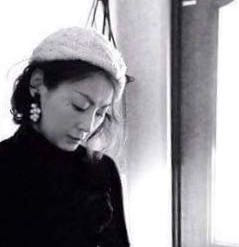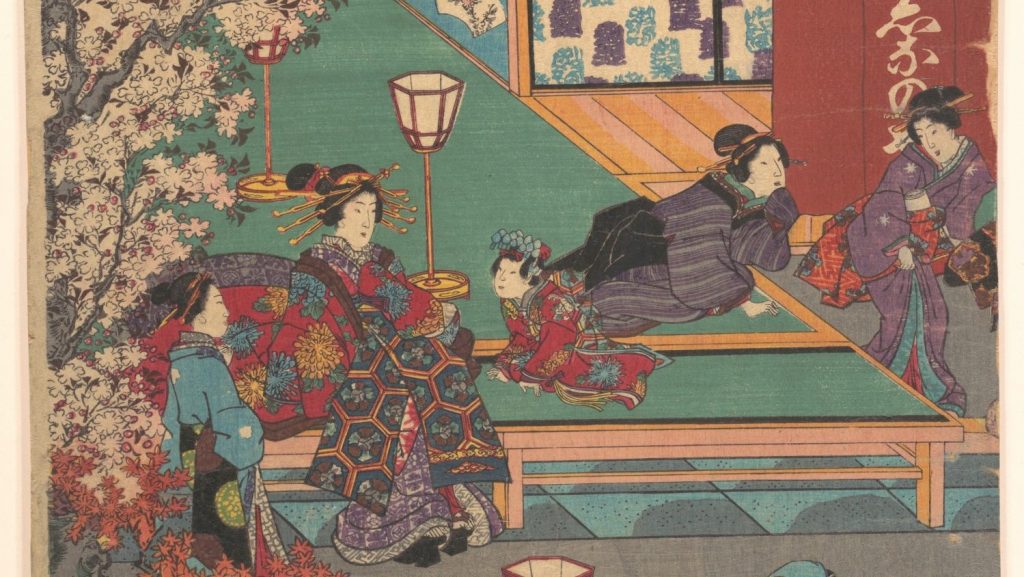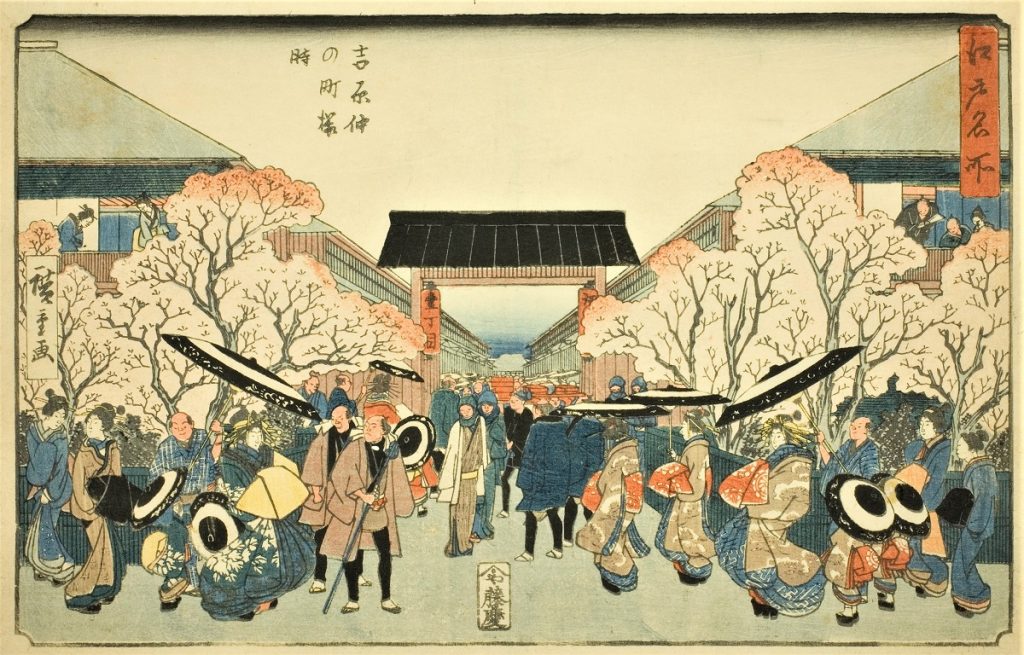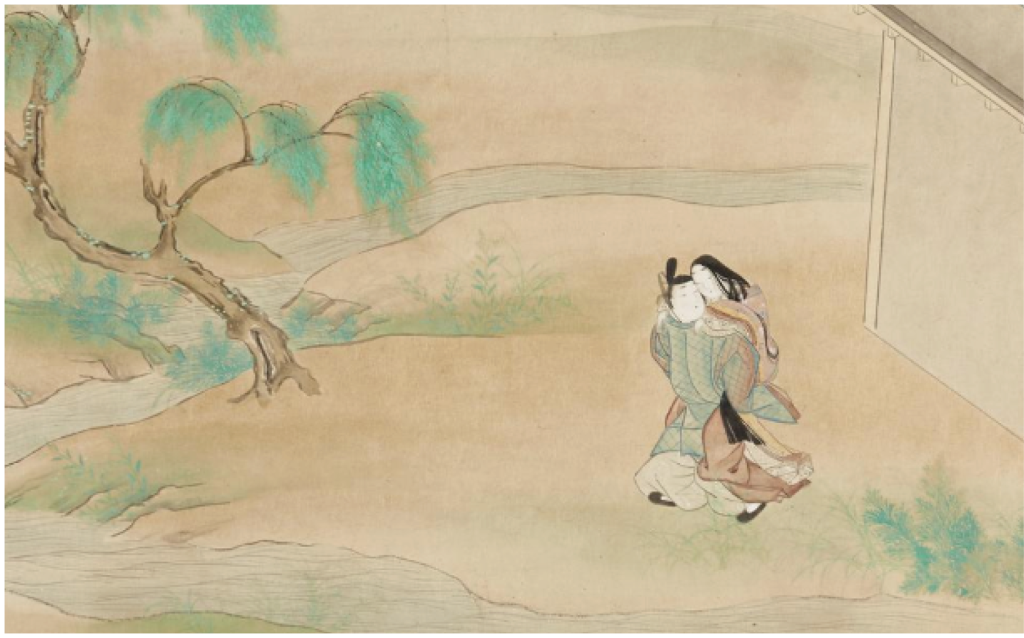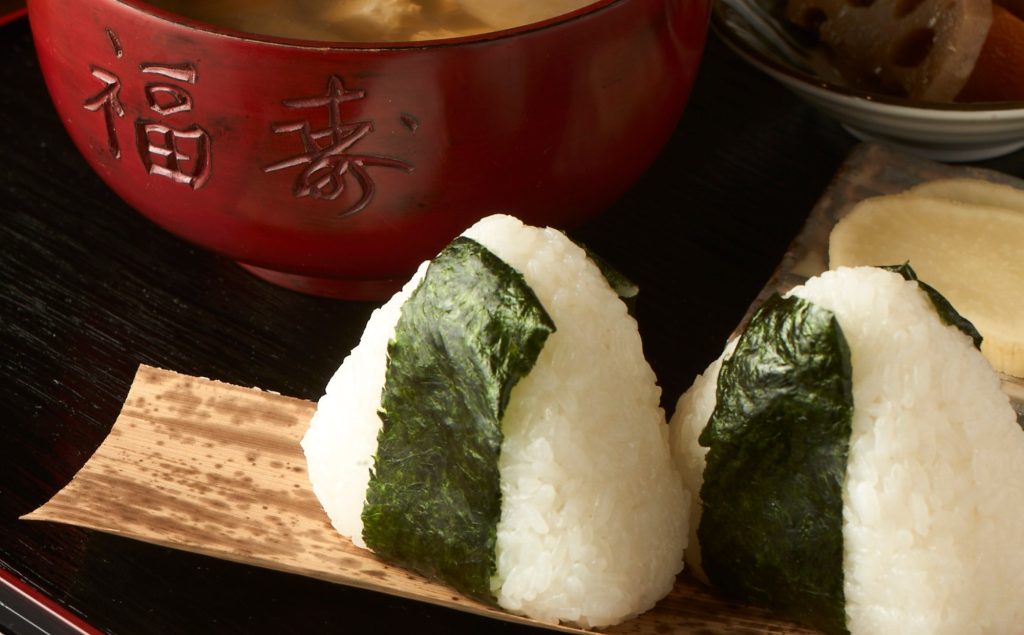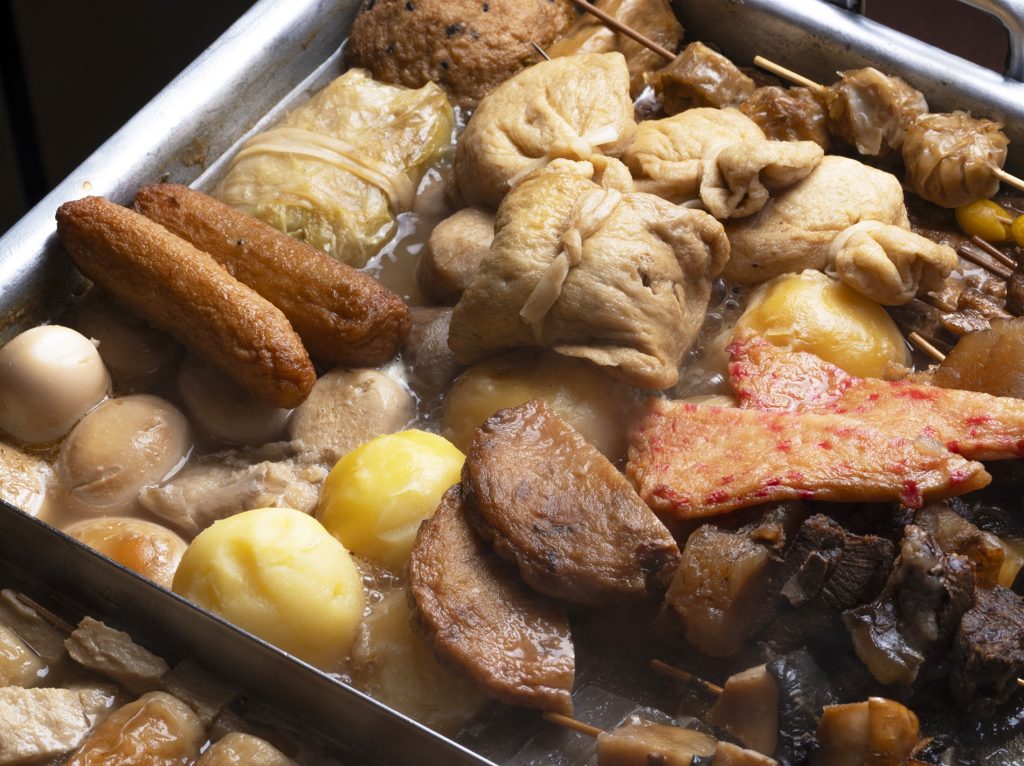Yoshiwara (吉原), a yukaku (遊郭, brothel district) officially recognised by the shogunate, was established in the Edo period. It was the most enjoyable place in Edo and had a major influence on Edo culture. At the heart of the town were the yujo (遊女, prostitutes). According to one theory, as many as 2,000 to 3,000 yujo were held in Yoshiwara. Among these yujo, the most beautiful and intelligent were called ‘oiran (花魁, courtesans)’. If you wanted to spend a night with them, you had to pay a lot of money for the entertainment of the Yoshiwara. There were also various rules.
What we would call nowadays a theme park parade? The lavish Oiran Dochu
In this closed world of debt and suffering, the Oiran Dochu (花魁道中) parade in Yoshiwara is a spectacular scene.
This was a kind of custom in which oiran accompanied by shinzo (新造)*1, kamuro (禿)*2, banto (番頭) and yarite (遣手)*3 formed a large procession to and fro between the giro (妓楼 brothel) and the hikite chaya (引手茶屋)*4 where the customers were waiting. 
A once-in-a-lifetime pseudo-wedding?
For the men, it was a once-in-a-lifetime event, like a wedding ceremony, as they headed to the yukaku with the oirans, who would be top stars in modern times. News spread, and townspeople began to visit Yoshiwara to see the oiran at first sight. 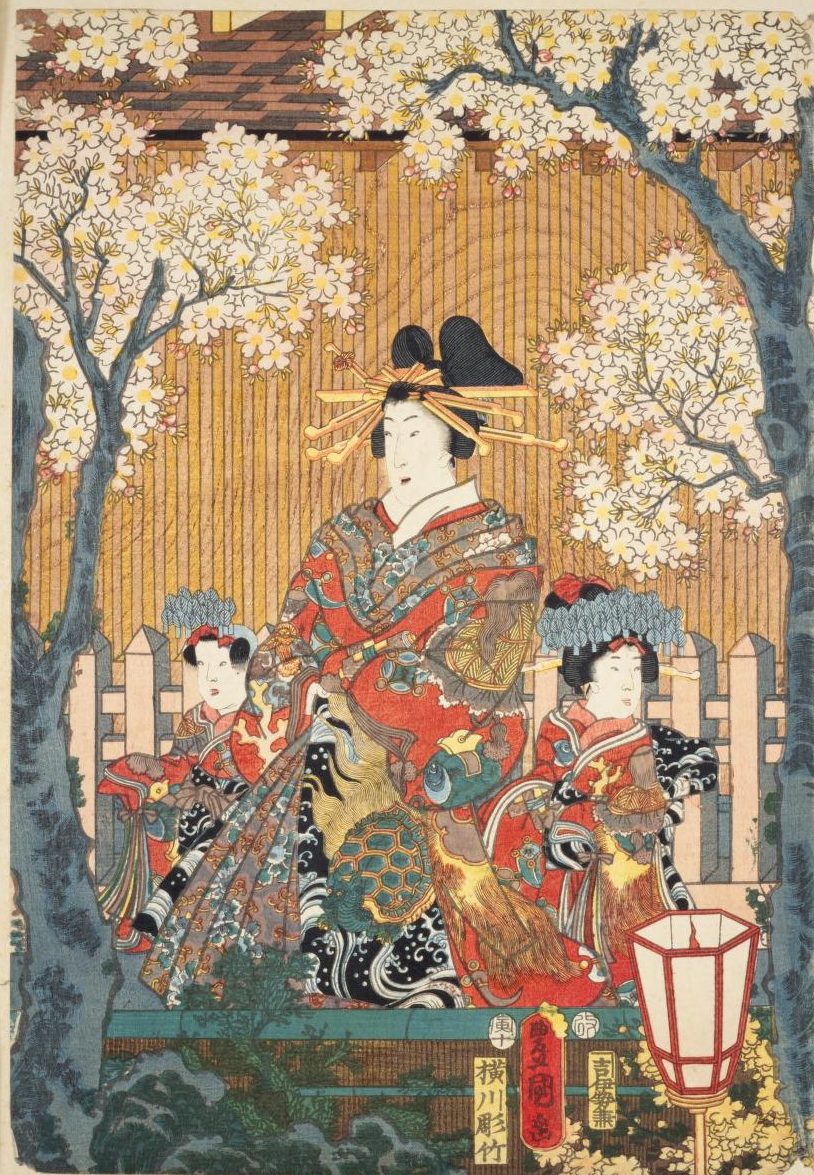
During the Horeki (宝暦) period (1751-1764), it became a kind of parade on specific days, moving to a kind of entertainment like the ‘oiran show’, in which the performers paraded through Yoshiwara with their lavish costumes and flamboyant performances along the main street of Naka no machi (仲の町).
Oiran Dochu, a gem of Edo culture, depicted in literature and on the stage
The oiran, with their many ornaments in their hair, layers of glittering costumes, sanmai ba no nuri geta (三枚歯の塗り下駄, three-toothed lacquered geta) and the outward movement of their legs, known as the Soto hachimonji (外八文字), created a culture unique to Yoshiwara and was depicted in novels, films and on the stage. On 1 March, a spectacular performance was staged in which cherry trees were planted, with wildflowers added under the large trees and hedges around them, and visitors enjoyed competing with the beautiful oiran amidst the falling cherry blossoms. The fleetingly falling cherry blossoms may have reflected the image of Yoshiwara like a one nights dream. 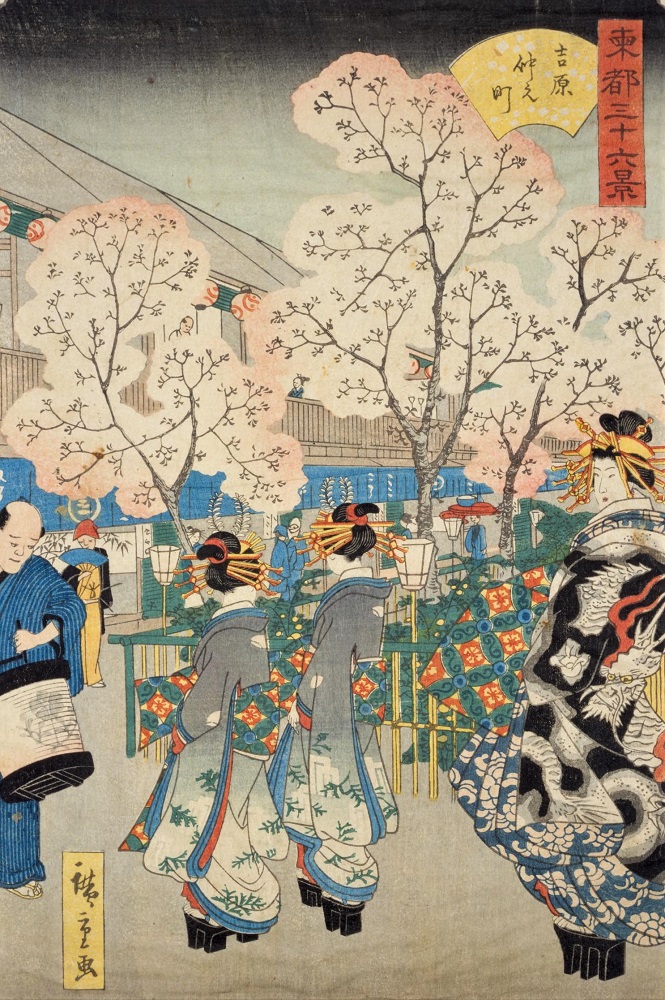
Eye-catching image: Yoshiwara nakanomachi sakura no hi (吉原中之町桜の日; Yoshiwara nakanomachi sakura no Monbi, 吉原中之町桜の門日) from the series ‘Edo Meisho (江戸名所)’ , by Utagawa Hiroshige (歌川広重), The Art Institute of Chicago
This article is translated from https://intojapanwaraku.com/rock/238221/







